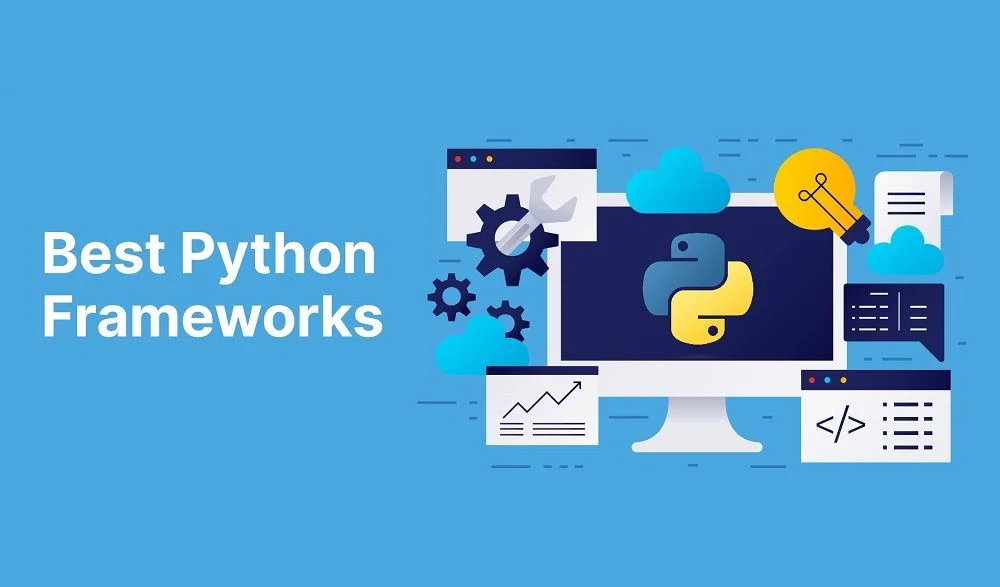-
Django
Django is an undeniable level Python web system intended to advance fast turn of events and perfect, sober minded plan.
It was made in 2003 by Adrian Holovaty and Simon Willison while working at the Lawrence Diary World paper. Django was at first evolved to deal with the paper’s substance, and it was publicly released in July 2005 under the BSD permit.
The system is named after Django Reinhardt, a popular jazz guitarist. Django immediately acquired ubiquity because of its effortlessness, versatility, and vigorous highlights, turning into a favored decision for engineers building web applications.
It incorporates apparatuses for taking care of data sets, URLs, and layouts, empowering engineers to proficiently fabricate complex web applications.
The most well known applications made utilizing Django include:
Instagram: An internationally famous online entertainment stage that permits clients to share photographs, recordings, and stories.
Pinterest: A visual disclosure and bookmarking stage where clients can find and save thoughts on different subjects, from recipes to home stylistic theme.
Disqus: A broadly involved remark facilitating administration for sites and online networks, offering social coordination and control instruments.
Features:
Full-stack structure with an ORM, administrator connection point, and validation framework.
Huge people group and broad documentation.
Implicit security highlights (e.g., CSRF assurance, SQL infusion anticipation).
Simpler to oversee enormous scope applications
ORM (Article Social Planning)
Underlying Administrator Connection point
URL Steering
Templating Motor
Structure Dealing with
Validation Framework
Middleware Backing
Internationalization and Limitation
Security Elements (e.g., CSRF assurance, XSS avoidance)
Adaptability and Reusability
Implicit Testing System
Reserving System
Data set Relocations (through Django Movements)
REST Structure Coordination (with Django REST system)
Cons:
Can be solid and weighty for little ventures.
Expectation to learn and adapt for amateurs.
-
Carafe
Carafe is a lightweight Python web structure made by Armin Ronacher and delivered in April 2010. It centers around straightforwardness and adaptability, permitting engineers to assemble web applications with negligible arrangement.
In contrast to bigger structures as Django and Pyramid , Flagon gives engineers the opportunity to pick their devices, making it ideal for speedy activities and little applications.
In spite of its moderate methodology, Jar has become well known for its usability and adaptability.
Cup is utilized to make top notch applications, for example,
Netflix: Portions of Netflix’s backend and inward devices are assembled utilizing Jar, exploiting its adaptability and effortlessness.
Reddit: Jar is utilized in a portion of Reddit’s microservices, dealing with the stage’s huge client connections and information handling.
Lyft: The ride-sharing help involves Jar for different pieces of its backend, especially in microservices and APIs.
Patreon: A participation stage that gives instruments to makers to run a membership content help, involving Jar for its web foundation.
Airbnb: A few parts of Airbnb’s tech stack influence Carafe, especially for its microservices engineering.
Features:
Moderate methodology, permitting designers to pick their parts.
Astounding for fast prototyping.
Lightweight and Moderate
Secluded and Extensible
Implicit Improvement Server
Jinja2 Templating Motor
URL Directing
WSGI Consistence
Support for Secure Treats (client-side meetings)
Soothing Solicitation Dealing with
Simple Coordination with ORMs (e.g., SQLAlchemy)
Unit Testing Backing
Broad Documentation
Adaptable Design
Outline Framework for Huge Applications
Augmentation Backing (e.g., Cup Login, Flagon WTF)
Cons:
Needs underlying highlights; requires outsider augmentations for things like verification.
Not as versatile for enormous tasks without huge setup.
-
FastAPI
FastAPI is a cutting edge, superior execution web system for building APIs with Python 3.7+ in view of standard Python type hints. Known for its speed, FastAPI is intended to be not difficult to use while permitting engineers to assemble strong, creation prepared APIs rapidly.
Famous applications and stages that have used FastAPI include:
Microsoft: Portions of Microsoft’s inward and outer administrations use FastAPI for building elite execution APIs.
Netflix: Netflix has involved FastAPI for a portion of its interior information science and AI devices.
Uber: FastAPI drives a portion of Uber’s administrations, especially those requiring high throughput and low idleness.
Spotify: FastAPI is utilized in a portion of Spotify’s backend administrations, particularly in situations where execution and versatility are basic.
Blast artificial intelligence: The makers of spaCy, one of the most famous regular language handling libraries, use FastAPI for their AI items, including the Wonder comment apparatus.
FastAPI Elements:
Elite Execution: Practically identical to Node.js and Go, making it one of the quickest Python structures accessible.
Simple to Utilize: Basic grammar and programmed documentation age with Strut UI and ReDoc.
Reliance Infusion: Worked in help for reliance infusion, advancing spotless and particular code.
Offbeat Help: Local help for nonconcurrent programming with async/anticipate, ideal for present day web applications.
Information Approval: Programmed solicitation and reaction approval utilizing Pydantic models.
Intelligent Programming interface Documentation: Consequently creates intuitive Programming interface documentation, making it simple to test endpoints.
Type Comments: Use Python type clues to give more solid code and better proofreader support.
Cons:
Somewhat new, with a more modest local area contrasted with Django or Jar.
Restricted help for specific use cases (e.g., customary MVC engineering).
-
Pyramid
Pyramid is an adaptable and lightweight Python web structure that is intended to scale from little, straightforward applications to huge, complex ones.
It is essential for the Arches Venture and is known for its moderation and “pay just for what you use” reasoning, permitting engineers to begin with a fundamental arrangement and add parts depending on the situation.
Features:
Adaptable, reasonable for both little and enormous applications.
Adaptability: Pyramid can be utilized for little, negligible applications as well as enormous, complex ones, giving the adaptability to scale depending on the situation.
URL Dispatch: Gives strong URL steering capacities, permitting engineers to plan URLs to effectively code capabilities.
Extensibility: Supports a great many expansions and outsider bundles, making it simple to modify and expand usefulness.
Security: Worked in help for validation and approval, with highlights like meeting the executives and CSRF assurance.
Templating Choices: Viable with different templating motors, including Jinja2, Mako, and Chameleon, permitting engineers to pick their favored instrument.
Testing Backing: Incorporates broad help for testing, empowering engineers to effortlessly compose and run tests.
Resource The board: Offers apparatuses for overseeing static resources and application assets proficiently.
Internationalization and Restriction: Worked in help for making multilingual applications effortlessly.
Cons:
Less well known, with a more modest local area and less instructional exercises.
Requires more arrangement and design contrasted with structures like Django.



